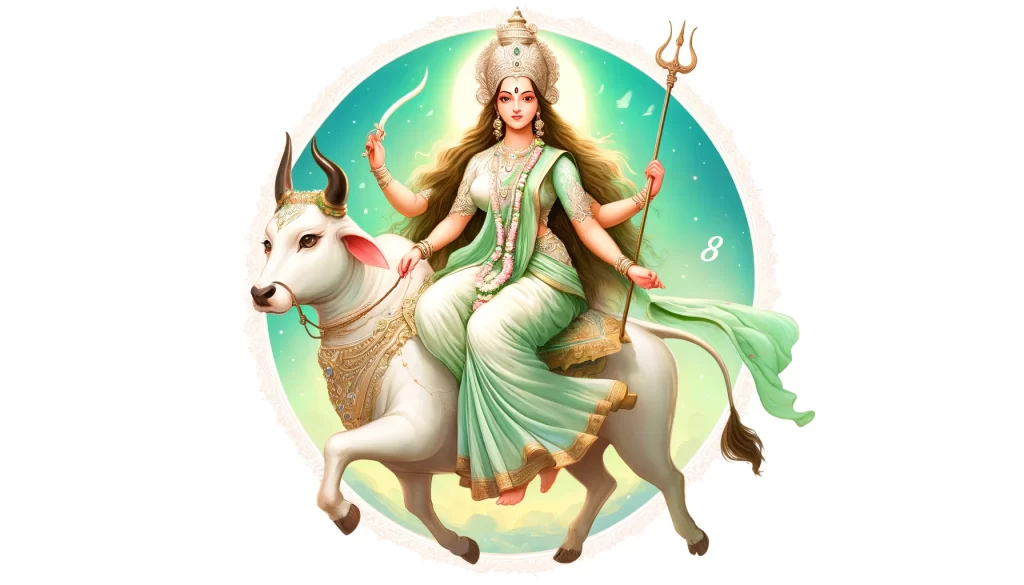As Navratri nears its culmination, Day 8 is dedicated to Goddess Mahagauri, the eighth form of Goddess Durga. Known for her radiant beauty and power of purification, she brings clarity and removes suffering from the lives of her devotees.
Who is Goddess Mahagauri? Goddess Mahagauri is depicted as extremely fair, dressed in white or green, riding a white bull, and holding a trident and a damaru (drum). She symbolizes purity, tranquility, and peace and is often associated with the forgiving aspect of divinity.
Symbolism and Significance Worshipping Goddess Mahagauri purifies the souls of her devotees, erasing past sins and imperfections. Her followers believe that she endows them with inner peace and a calm mind. She is also associated with the powerful energy of rejuvenation and renewal.
The Story of Mahagauri Legend has it that Goddess Mahagauri practiced severe penances in the Himalayas to obtain Lord Shiva as her husband. Due to the intense practices, her complexion turned dark; later, when Shiva cleansed her with the water of the Ganges, her body regained its beauty, symbolizing purity and brightness.
Cultural Practices and Rituals On this day, devotees wear white to symbolize purity and may undertake fasts. Special prayers and pujas are performed, and the atmosphere is filled with devotional music and chants.
Contemporary Reflections In today’s world, Goddess Mahagauri inspires us to strive for purity in thoughts, actions, and in our environment. She teaches us the importance of cleanliness, peace, and the virtues of forgiveness and compassion.
Join us tomorrow for the final day of Navratri as we honor Goddess Siddhidatri. Continue exploring the rich tapestry of Hindu culture and spirituality with Sanskriti Magazine for more insightful articles and reflections.








